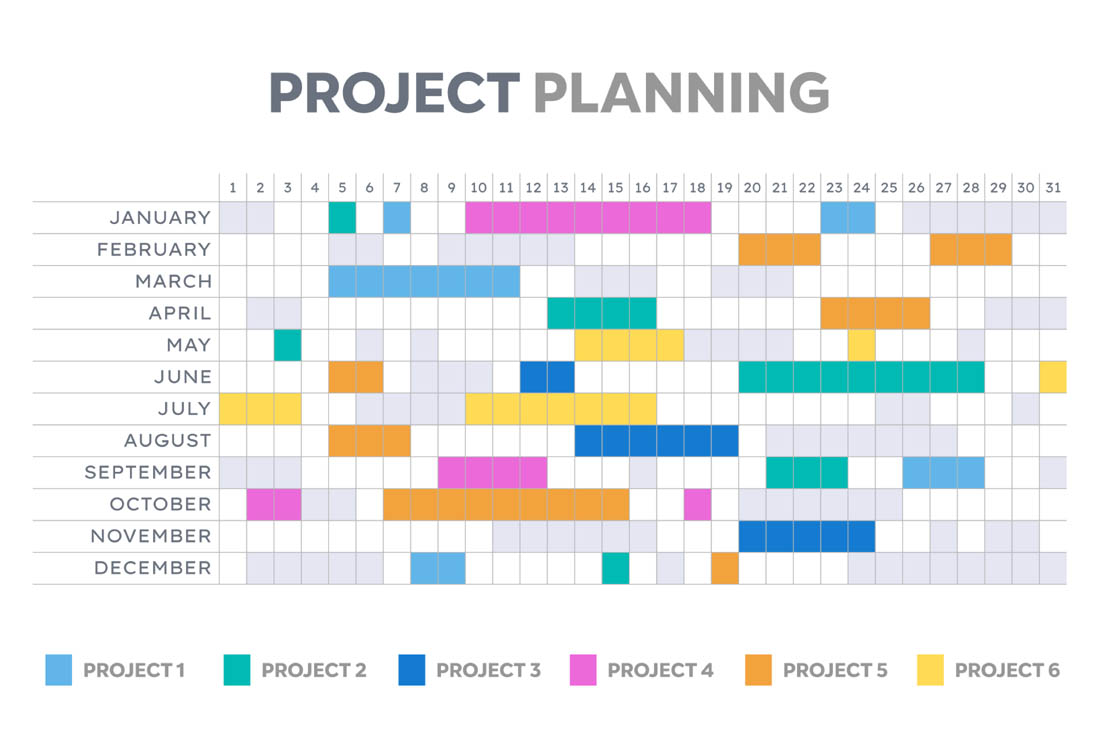For your employees to be productive, they have to be time efficient. Competing priorities, deadlines and distractions all make staying focused harder than ever before. Finding ways to maximize employee time is essential to your business’s success.
Explore six time-efficient tips for boosting productivity, streamlining processes and keeping your employees from burnout.
What is time efficiency?
In basic terms, time efficiency is how an employee manages their tasks during the day. For most employees, it’s a daily habit they learn over years of working. Being time efficient can include using project management tools, creating to-do lists, scheduling breaks and prioritizing tasks. As workloads or responsibilities increase, however, it can be difficult for employees to be able to scale up their time management skills.
Benefits of time-efficient employees
The more time-efficient an employee is, the more benefits the employee and the organization will see. Higher time efficiency has benefits for both employees and employers:
- Higher operational efficiency: When employees can get work done in the shortest amount of time with the fewest errors, it’s a boon to the company’s bottom line resulting in higher operational efficiency.
- Better productivity: Employees who manage their time effectively can also get more accomplished.
- Less stress: Effective time management means less stress for employees because they know they’ll get their work done. They’ll be less likely to feel overwhelmed and better able to manage their workloads. This can lead to a lower likelihood of burnout, which is a benefit for employers, too.
- Better work-life balance: If employees stick to schedules and manage their time, they can also manage their personal lives better, leading to better work-life balance.
- More opportunities: When employees spend less time distracted and accomplishing tasks, they can have an easier time setting goals. This can also mean more opportunities for their careers.
- Higher quality work: The ability to focus better will also give employees better efficiency at work, which can mean improved output and better quality results.
- Fewer missed deadlines: Good time management means employees can prioritize and work more effectively, meaning they can meet deadlines more easily.
- Lower costs: As employees become more efficient, they’ll be less likely to waste resources, which results in better cost management for the organization.
6 tips to help employees be more time-efficient
While many employees find their own ways to manage their daily schedules, it’s a good idea to provide tools and tips to help your employees be more time-efficient. Every organization is different, but these six general tips can help your employees be more time-efficient.
1. Give employees ways to prioritize tasks
Every project may feel like a priority at your workplace, but the ability to prioritize is the first step in being more efficient with your time. Ensure that managers and supervisors understand what counts as a top-priority task and what tasks may be less important and that they’re able to effectively communicate this to team members. At the same time, employees should have the power to push back on unrealistic deadlines or tasks that may be considered wasting time (like unnecessary meetings) without fear of reprisal.
2. Provide project management and scheduling tools
One way to clarify priorities is to provide project management tools for employees. Software or apps can help managers and employees see what tasks are ahead and what projects are stalled, as well as whose responsibility it is to complete them. At the same time, employees should schedule work based on its priority and how time-consuming it is. Shared calendars are a great way for employees to schedule their daily tasks and see when collaborators are available to work on group projects or chat about issues.
3. Automate repetitive tasks
One of the best ways to help employees with their time management is to take repetitive, menial tasks off their to-do lists. Many tools are available to cut down on manual processes like data entry, timesheets, expense reports and following up on outstanding tasks. By removing these time-consuming tasks from employees’ plates, you provide them more time to focus on more important work.
4. Minimize distractions in the workplace
Being distracted from work can have major negative impacts on employee productivity and focus. Whether it’s digital notifications from emails or social media, interruptions from colleagues or meetings, distractions are a common part of an employee’s life. Provide your employees with ways to avoid distractions, such as establishing organization-wide quiet hours where employees can expect to work without interruptions or meetings, private areas in the office where they can focus on work without dealing with ambient noise or even noise-cancelling headphones to help them focus. Encourage employees to use do-not-disturb functions on personal devices or work communication apps to help them focus when they need to.
5. Track effective work time
Knowing how you spend your time can be an eye-opener for becoming more time efficient. Time tracking software like ActivTrak employee productivity monitoring helps provide teams with data on the amount of time they spend on focused work vs. distractions, including how much time they’re spending in meetings, using different technology or looking at websites. This data can help supervisors and employees alike find patterns they should address to help redistribute unbalanced workloads or provide employees with more training or tools to help them better manage their time. It can also help you set benchmarks for how long projects should take to complete and help employees schedule work accordingly.
6. Create processes to maximize time efficiency
If good time management is written into how your company operates, employees will have an easier time being time-efficient themselves. Create processes and procedures that minimize unnecessary meetings, make project management easier and give employees the ability to manage their time effectively. This may mean implementing flexible work arrangements so employees have more control over their time and work when they’re least likely to be distracted.
Track and improve time efficiency with ActivTrak
Find out where, when and how your employees best manage their time with ActivTrak. Get a daily breakdown of work metrics with productivity reports to see where employees spend their time and get a better idea of average working hours to help employees collaborate more effectively. Keep an eye on work hours, balance workloads and proactively identify signs of burnout with workload management. Gain insight into coaching opportunities for employee productivity with productivity coaching to help you drive collaboration and efficiency across teams. Get a free demo of ActivTrak to see how it will help your organization improve employee time-efficiency today.





